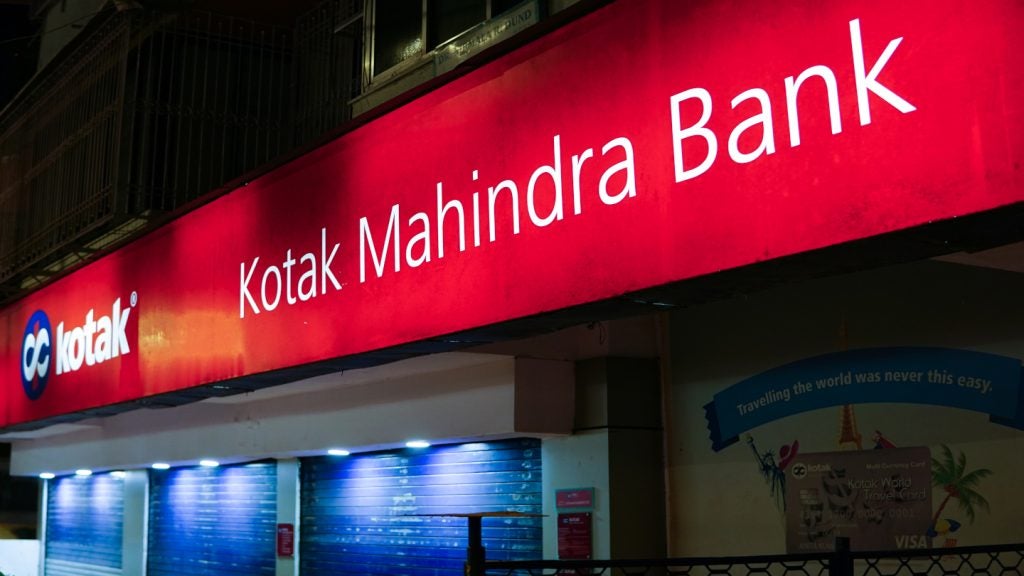A new report* has been published by VRL on the current
state of the global bancassurance market, taking account of the
recent financial crisis. The following brief extract looks at the
profitability of competing business models and prospects for growth
in the three key geographies – the US, Europe and
Asia-Pacific
While the financial crisis has had an impact on the global
bancassurance model, with sales of life and other long-term
investment products in severe decline as banks prioritise deposits
to replenish liquidity, the future of the bancassurance channel
remains positive.
In broad terms, bancassurance in the three key
geographies – the US, Europe and Asia-Pacific – is likely to
continue along the same lines developed in the past few years with
penetration levels in the developed markets of Europe expected to
gain some ground, particularly in the UK and Germany which will
benefit from product simplification.
In the US, despite early indications that
bancassurance might achieve market penetration levels in life
insurance comparable to the one-third share it has in Europe, US
banks will struggle to improve current modest market shares of 2
percent.
Life insurance in particular will probably
remain a marginal product for bank management, while bancassurance
has already achieved significant penetration in other investment
products such as annuities and mutual funds.
As long as bank management eschews
underwriting risks and does not achieve significant integration
economies, profits from life and other insurance products are
unlikely to justify the investment in systems and training to win
market share from the dominant agent/broker community.
How well do you really know your competitors?
Access the most comprehensive Company Profiles on the market, powered by GlobalData. Save hours of research. Gain competitive edge.

Thank you!
Your download email will arrive shortly
Not ready to buy yet? Download a free sample
We are confident about the unique quality of our Company Profiles. However, we want you to make the most beneficial decision for your business, so we offer a free sample that you can download by submitting the below form
By GlobalDataThe evidence from the period since full
deregulation in 1999 is that cross-selling of bank products even
through acquired brokers will be limited in view of the cultural
mismatch and different client/product segment targeted by bank and
brokers.
Booming markets of Asia, Latin
America
In contrast, in the booming markets
of Asia Pacific and Latin America, market shares of the bank
channel will approach European levels.
Customers’ reliance on their banker as a
provider of a range of basic financial products; the banks’ cost
advantage over agencies; the expertise contribution made by foreign
partners; and the extensive branch networks will bring bank
distribution closer to the one third of the life market it has in
developed Europe. In those markets without vertical integration,
such as India and China currently, penetration may fall short of
its potential because of ineffective sales processes and
technology.
Yet the outlook for profits in the emerging
markets is less exciting in view of the relative lack of structural
integration, price competition in the struggle for market share,
and the substantial set-up costs of recruitment and training of
scarce talent, installation of modern IT systems and applying
Western standards of corporate governance.
While bancassurance market share may not
approach that of the EU countries, the absolute size of markets
like China and India make them difficult for a global bancassurance
competitor to ignore.
As in recent years, the principal drivers of
future revenue growth will be swelling personal wealth and an
ageing population, which will be felt largely in higher sales of
life and other investment products. In the short term, the speed
and extent of economic recovery from the crisis will be a key
variable.
While traditional life insurance will remain a
significant factor in many countries, its dominance will be
threatened by cheaper, simpler investment products such as
annuities, mutual funds, guaranteed bank deposits and alternative
investments. On the other hand, banks’ efforts to simplify the life
product by reducing the need for documentation – ‘life-lite’ – may
bear fruit in markets like the US and UK.
Over time, the life product will increasingly
be subsumed into the generic category of a ‘long-term investment’
product as it has in Europe. The composite investment and
protection product such as whole life and endowment will lose
market share to pure tax-advantaged investment products, while
those seeking protection will tend to buy term life.
The recent growth in bancassurance market
share in non-life products should continue as banks increasingly
take advantage of the significant margins in leveraging their
retail lending business. Overall, banks outside the US will
continue to expand their insurance product range as they become
more comfortable with the risks, as well as benefit from customer
goodwill.
The losers in this competitive dynamic will be
the traditional insurance suppliers who may be obliged to give up
more of their margins or lose the business.
In making their product choices, banks in the
US and elsewhere must address the trade-off between customer choice
and the benefits of operational integration. To date the US banks
have chosen the former, while elsewhere own-brand products
dominate.
The next few years will see a continuation of
the correlation between channel dominance on the one hand, and
client wealth and sophistication on the other. Thus the independent
agent channel is gathering pace in booming Asia-Pacific markets
like China to satisfy the growing desire for product choice and
service, while in Europe, brokers in bancassurance markets like
France are winning business.
One of the major unknowns is the outlook for
customer channel preference and the possible undermining of the
traditional bank distribution system. Banks in many markets such as
Scandinavia are already concerned about the difficulty of
sustaining client relationships in a world where the customer
simply does not visit his or her bank branch.
The issue of channel mismatch – not matching
the client base with the appropriate products and skills – is
particularly relevant in the case of the US market.
The widespread and costly acquisition of
broker networks by hundreds of US banks does not appear to have
significantly boosted the banks’ efforts to cross-sell retail
insurance to their existing client base or add new banking clients
on the back of their brokers’ relationships.
The US thus remains the classical broker
market where the vast majority of bank clients look to their local
insurance broker or agent for insurance solutions.
It is difficult to envisage a significant
improvement there in the bancassurance market share for core
insurance products, although banks should continue to be a major
provider of essentially investment products such as annuities.
Divergent trends in bancassurance
profitability make profit forecasting particularly difficult – in
part at least because of the paucity of relevant performance data.
Yet the key driver of long-term profitability – the increase in
personal wealth – will continue to be valid in the future.
On the one hand, the underlying long-term
volume trends are positive, with bancassurance continuing to win
market share in Asia-Pacific and CEE on the back of further life
penetration, the broadening of the product line, a move into
upscale client segments, and possible integration measures.
In the US, however, additional penetration of
the life market is unlikely, and the volatility of the core annuity
product – as demonstrated by the recent financial crisis – plus
reliance on a pure distribution profit will limit profit gains.
The level of profit margins will be driven by
increased competition, the addition of higher margin products like
credit life, and economies of integration. In this respect, the
evolution of the European market might be instructive for less
mature markets like CEE and Asia-Pacific.
Bank distributors in Europe have pressured
their insurance partners for a higher share of the distribution
margin, while insourcing of product by banks has also increased the
profit pressure on insurers. On balance, the profit winners have
been, and will continue to be, the bank distributors.
Bancassurance case study – Crédit
Agricole
France’s largest retail bank has become a
global role model for bancassurance. Its strategic goal is to
‘create a world class European leader in banking and
insurance’.
In its home market, Crédit Agricole is the
second-largest life insurer through its subsidiary Predica, with 15
percent of the market. In non-life, its subsidiary Pacifica is the
country’s eighth largest competitor with a 2 percent market share.
Overall, insurance accounted for roughly 23 percent of the group’s
net income in 2007, in sharp contrast to its 6 percent share of net
banking income – an indication of the superior profitability of the
insurance business.
The key distribution channel in the home
market is the network of 2,000 local cooperative units with some
10,000 branches, many of which are located in rural areas or small
towns.
Abroad, Italy constitutes a major market with
several regional banks and over 700 branches in Northern Italy. In
Greece, Crédit Agricole owns Emporiki, the country’s fifth largest
bank with an 8 percent market share. In the CEE, the group is
active through affiliates in Serbia, Poland and the Ukraine.
Decades of Crédit Agricole’s experience in
bancassurance have created a role model for the integrated
management of banking and insurance both in the group itself as
well as with foreign partners.
In the 1980s, Predica developed what has
become the classic savings/life (épargne credit) simplified product
to be sold by a bank branch network to mass market clients. While
the recent financial crisis has made a major dent in sales of these
savings products, in particular the unit-linked ones tied to equity
investments, Predica has sustained its market share.
Lapse rates have approximated a relatively
modest 5 percent.The group has an impressive 40 percent share of
employees in the health services sector.
In addition to its bank distribution channel,
Predica sells to upscale French clients through financial advisers
and private banks. Some 92 percent of products sold are
savings/life products and 8 percent protection.
Predica’s plan for the current five-year
period is to target high net worth clients as well as retirement
products for SME clients. Pacifica has the ambitious goal of
ranking within the top five non-life providers in France, both in
the individual and corporate markets. Net assets of both Pacifica
and Predica increased by over 20 percent per annum over the
2004-2007 period.
The Crédit Agricole integrated model does not
appeal to all potential partners, as it involves a leadership role
many banking partners are unwilling to accept.
Thus the model seems to work best when Crédit
Agricole effectively controls the bank, as in the case of the Greek
subsidiary Emporiki, to achieve what the French term, unite de
doctrine.

* The VRL report, Bancassurance: After the Banking Crisis
will be published in December.
Written by Steve Davis, head of Davis
International Banking Consultants, the report looks at all aspects
of the bancassurance business model and includes a number of case
studies.
For more information, please contact
Shouvik Sen on +44 (0)20 7563 5615, email:
shouvik.sen@vrlknowledgebank.com







